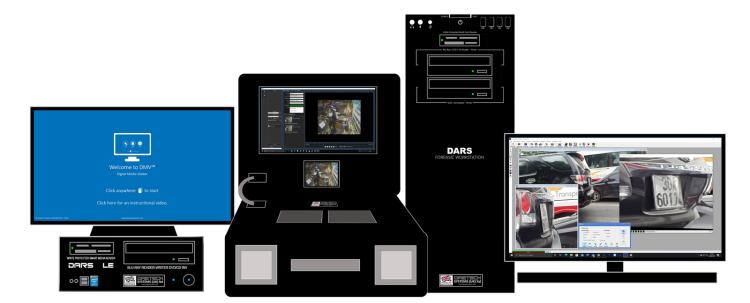Table of Contents
Introduction
In the realm of digital forensics, the demand for sophisticated tools capable of handling vast quantities of multimedia evidence is ever-increasing. Among these tools, Digital Audio and Video Forensic Recovery Systems (DARS) play a pivotal role. This article delves into the significance of DARS, particularly in the context of photogrammetry within forensic computer investigations.
Understanding DARS
-
What is DARS?
-
-
- DARS, short for Digital Audio and Video Forensic Recovery Systems, encompasses a range of processing engines meticulously designed to facilitate the playback, processing, capture, and analysis of CCTV and Digital Multimedia Evidence (DME).
-
-
How does DARS differ from traditional playback devices?
-
- Unlike traditional playback devices, DARS offers comprehensive solutions tailored to meet the stringent requirements of forensic investigations, ensuring the integrity of evidence remains intact throughout the analysis process.
The Intersection of DARS and Photogrammetry
Photogrammetry, the science of making measurements from photographs, finds a crucial application within forensic computer investigations. By employing DARS in conjunction with photogrammetric techniques, forensic experts can reconstruct three-dimensional scenes from two-dimensional images obtained from surveillance footage or other digital sources. This convergence allows for a deeper understanding of events captured in multimedia evidence, enabling investigators to extract valuable insights that might otherwise remain hidden.
-
How does photogrammetry enhance forensic analysis?
-
-
- Photogrammetry enables forensic examiners to reconstruct three-dimensional scenes from two-dimensional images, providing a more comprehensive perspective on events captured in multimedia evidence.
-
-
What role does DARS play in photogrammetric analysis?
-
- DARS provides the necessary processing power and tools to efficiently handle large volumes of multimedia evidence, facilitating the seamless integration of photogrammetric techniques into forensic investigations.
Leveraging DARS for Forensic Analysis
One of the primary advantages of incorporating DARS into forensic computer investigations is the assurance of adherence to forensically sound procedures and practices. These systems are engineered with meticulous attention to detail, ensuring that the integrity of the evidence remains intact throughout the analysis process. Moreover, DARS offers advanced capabilities for filtering, enhancing, and analyzing multimedia content, empowering forensic examiners to extract valuable information crucial to their investigations.
-
What are the key features of DARS that enhance forensic analysis?
-
-
- Advanced filtering and enhancement tools.
- Support for a wide range of multimedia formats.
- Integration with photogrammetric techniques for 3D reconstruction.
-
-
How does DARS ensure forensically sound procedures?
-
- DARS are designed to adhere to strict forensic standards, ensuring that evidence remains unaltered and admissible in court.
Conclusion
In conclusion, the integration of DARS into forensic computer investigations represents a significant advancement in the field of digital forensics. By harnessing the power of these specialized processing engines, forensic experts can navigate through vast quantities of multimedia evidence with precision and efficiency, ultimately unraveling crucial insights that aid in the pursuit of justice. As technology continues to evolve, DARS is poised to play an increasingly indispensable role in the forensic examination of digital multimedia evidence, particularly in conjunction with photogrammetric techniques.




